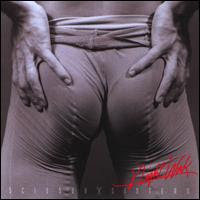The 2010-2011 season was blemished by the impending departure of Anthony. The Nuggets weren’t going to get stuck in the same situation Cleveland was last offseason when their own 2003 savior decided to hit the road. Denver’s front office carefully explored all the options on the table for Anthony, eventually settling on a smorgasbord of Wilson Chandler, Ray Felton, Danilo Gallinari, Timofey Mozgov, Kostas Koufos, a first round draft pick, two second round draft picks, and three million dollars. The Nuggets also lost the heroic Denver native, point guard Chauncey Billups, in the February 21 trade.
The Ewing Theory, popularized by ESPN.com’s Bill Simmons, was consummated in 1999 when the longtime star center for the New York Knicks, Patrick Ewing, was injured during a playoff series against the Indiana Pacers. The Knicks promptly won three out of four to reach the NBA Finals. The Ewing Theory refers to a situation in which a team shockingly improves after the departure of its biggest star. With all due respect to Ewing and Luke Harangody, it might be time to rename it “The Melo Theory."
To the amazement of just about everyone except beatific head coach George Karl, the Nuggets have won 15 of 20 games since The Trade, including rugged wins over the Celtics, Spurs, and Lakers. The five losses have come by a combined 22 points. Two months ago, Denver had two star players and zero hope of winning in the playoffs. Now they have zero stars, boatloads of confidence, a Mack truckload of momentum, and a bandwagon bursting at the seams.
There are two explanations – one simple and one more intricate – for Denver’s stunning success in the post-Melo era. First and foremost,
The Denver Nuggets have many very good basketball players
Losing a star player is meaningless if those who play in his place are up to the task, and that is certainly true in Denver’s situation. The men who get Carmelo and Chauncey’s minutes are not merely replacement-level players. The Nuggets play eleven players more than eleven minutes apiece, and at least nine of them are above-average NBA players.

Nene is arguably the most indispensable Nugget. Denver has stuck with the Brazilian Behemoth since drafting him 7th in the 2002 draft, the year before Carmelo Anthony arrived. Nene is a freak of nature: 6’-11”, 250 lbs, strong, athletic, adept with both hands, skilled at passing the ball, shooting it from short to medium range, and staunch in the post. After an injury-riddled early career, he has stayed healthy the last three years and blossomed into a stone cold beast. Nene’s 62% field goal shooting leads the NBA, while he is currently averaging a career high in points, free throw attempts, and free throw percentage (74%). Meanwhile, he posts a positive assist to turnover ratio – almost unheard of for a center, and better than that of Carmelo Anthony.
J.R. Smith is Denver’s most dangerous scorer in Melo’s absence. Smith is another longtime Nugget management had plenty of opportunity to unload – but wisely held onto. Smith’s scoring is actually down this season from the last four – but his defense, assist/turnover ratio, and rebounding are all up. Though it seems as if Smith has been in the NBA forever, he is still only 25 years old.
 At 33, Kenyon Martin is playing the best basketball of his career. Slowly, at times painfully, Martin has morphed from an unlikable wannabe scorer into a wise, outstanding defensive-minded team player and leader. He now averages half the points he did in the “height” of his career, yet shoots a higher percentage while turning the ball over half as often. The Nuggets have stuck with Martin and his enormous contract through the injuries and the ineptitudes, and are finally reaping the benefits.
At 33, Kenyon Martin is playing the best basketball of his career. Slowly, at times painfully, Martin has morphed from an unlikable wannabe scorer into a wise, outstanding defensive-minded team player and leader. He now averages half the points he did in the “height” of his career, yet shoots a higher percentage while turning the ball over half as often. The Nuggets have stuck with Martin and his enormous contract through the injuries and the ineptitudes, and are finally reaping the benefits.

Raymond Felton and Ty Lawson both played point guard and won a national championship with coach Roy Williams at North Carolina. Now they both play point guard for George Karl and the Denver Nuggets. Like Williams, Karl prefers an attacking, fast-paced transition offense. In Felton and Lawson, the 1973 North Carolina grad has his muses. What they lack in height, Felton and Lawson make up in speed. Lawson is just about the fastest person you will ever see on a basketball court, and Felton’s right behind him. Both guards also share a disregard for extracurriculars – neither seems to care about anything other than winning basketball games.
Arron Afflalo was pegged as the “crunch-time scorer” after Melo’s departure, but doesn’t fit the profile. Afflalo isn’t a scorer so much as an all-around solid player, lacking weaknesses while excelling on defense and threes. Afflalo has been battling a hamstring the last few weeks, and should see limited action until the playoffs where he may be assigned shepherding duties on Kevin Durant.
Wilson Chandler is another balanced, egoless do-everything player. Chandler has been Denver’s most consistent player since The Trade, posting straightforward offensive numbers while vastly outperfor ming Melo as a defensive small forward.
ming Melo as a defensive small forward.
The awkwardly agile 6’10” Italian Danilo Gallinari leads the Nuggets (who lead the NBA) in scoring, though he doesn’t crack the league’s top 50. Gallinari’s unique game sees him chuck a lot of three pointers, but also draw a lot of fouls. He really excels at the line – 88% on the season. It remains to be seen where Gallo’s game develops in the coming years, as he’s only 22 years old.
 Crowd favorite Chris “Birdman” Andersen has been playing some inspired ball as of late. Perhaps because, as George Karl noted, there are some more foxes in the hen house. The trade seems to have lit a fire under the Bird, and he’s back to playing the fearless, maniacal style that helped ignite Denver’s 2009 run to the Western Conference Finals.
Crowd favorite Chris “Birdman” Andersen has been playing some inspired ball as of late. Perhaps because, as George Karl noted, there are some more foxes in the hen house. The trade seems to have lit a fire under the Bird, and he’s back to playing the fearless, maniacal style that helped ignite Denver’s 2009 run to the Western Conference Finals.
When asked which of the players the Nuggets picked up in The Trade has exceeded his expectations, GM Masai Ujiri says “all of them.” Still, the Nuggets are not more talented than they were with Anthony and Billups. They are clearly a better team, however.
The discharge of Anthony and Billups was akin to the removal of a clump of stones diverting a stream of water in an unnatural direction. Both score often and effortlessly, but with a more plodding, deliberate style. The new Nuggets run, drive, cut, and pass more than the old. Lawson is a better player when he doesn’t have to worry about feeding the alpha dog. Nene gets spoon-fed more balls in the post. The Birdman flies free. Felton epitomizes the essence of The Trade – devastated when he heard he was leaving a good situation, invigorated once he realized the new team was better than the old one.
The Nuggets are also better on defense than they ever were with Carmelo Anthony. Whether that is because Melo is a mediocre defensive player or because the new Nuggets play with the hunger of anonymity, the fervor of propulsion, and the revelation of resurrection is unclear. But there is no doubting the numbers – over 103 points per game surrendered before the trade, 94.8 after. Over 46% field goal shooting allowed before the trade, less than 44% afterwards.
 This is the team Karl – a recent survivor of cancer and the frontrunner for NBA Coach of the Year – has always fantasized about coaching. No #1 option. No #2 option. Just a bunch of guys who can run and jump, guys who love playing defense, guys still climbing the mountain, guys whose careers are undefined, guys forced into the knowledge that winning basketball games is the best definition available for them.
This is the team Karl – a recent survivor of cancer and the frontrunner for NBA Coach of the Year – has always fantasized about coaching. No #1 option. No #2 option. Just a bunch of guys who can run and jump, guys who love playing defense, guys still climbing the mountain, guys whose careers are undefined, guys forced into the knowledge that winning basketball games is the best definition available for them.
As glorious as the season has been since The Trade, it could easily come to a hasty halt in the playoffs. The Nuggets are slated to play the Oklahoma City Thunder, the only team to beat them in Denver since The Trade, in round one of the playoffs. The Thunder have been on a trade-precipitated rush of their own after dealing Jeff Green for Kendrick Perkins. The winner of what figures to be an epic series will have an excellent shot at beating (most likely) the sputtering Spurs in round two and advancing to the Conference Finals.


















